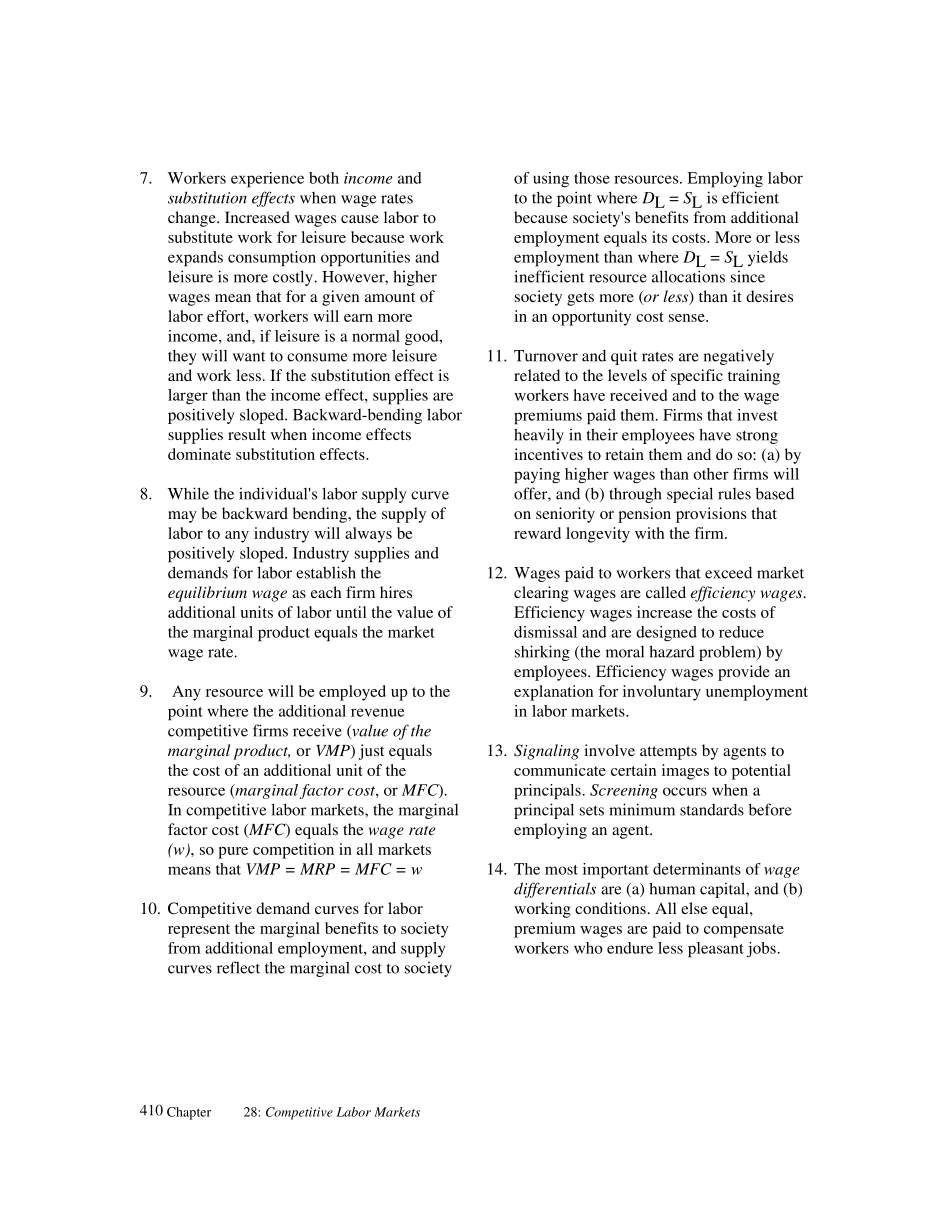Byrns: Student Guide for Learning Contemporary Economics 409 Chapter 13 / 28 Competitive Labor Markets Chapter Objectives After you have read and studied this chapter, you should be able to describe a competitive firm's demand for labor in competitive labor markets; the accumulation of human capital and its effect on the demand for labor; the determinants of labor supplies and the influences on labor force participation rates; equilibrium and efficiency in a competitive labor market; strategic behavior in labor markets; and the reasons for wage differentials between occupations. Chapter Review: Key Points 1. The demand for any resource is related to the: (a) amounts of other factors employed, (b) production technology used, and (c) demand for the product. Because the demand for labor (or any factor) hinges on the demand for final products, it is a derived demand. 2. Marginal revenue product (MRP) is the firm's revenues generated by hiring the marginal unit of some input which is equal to MR × MPPL. In perfect competition, this is the same as the value of the marginal product (VMP) which is equal to P × MPPL. 3. Increases (decreases) in the demand for the product, in labor productivity, or in the amounts of other resources used will normally increase (decrease) the VMP and demand for labor. Technological changes may either increase or decrease labor demands. Automation is the replacement of workers by new technologies. 4. The elasticity of demand for labor is directly related to the: (a) elasticity of demand for the final product, (b) labor's share of total costs represented by the wage bill, (c) ease of factor substitution, and (d) time for adjustment. 5. The supply of labor depends on:...


